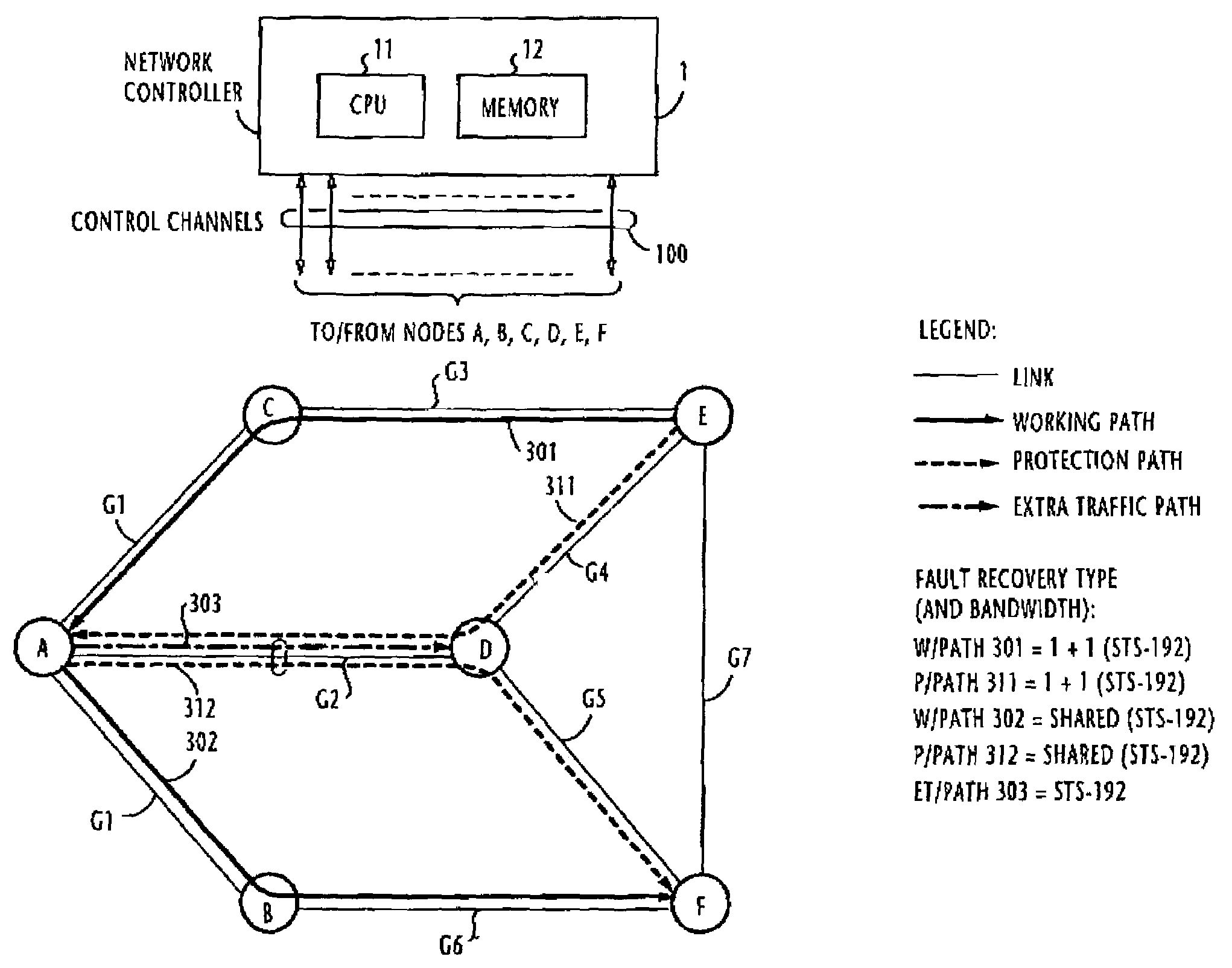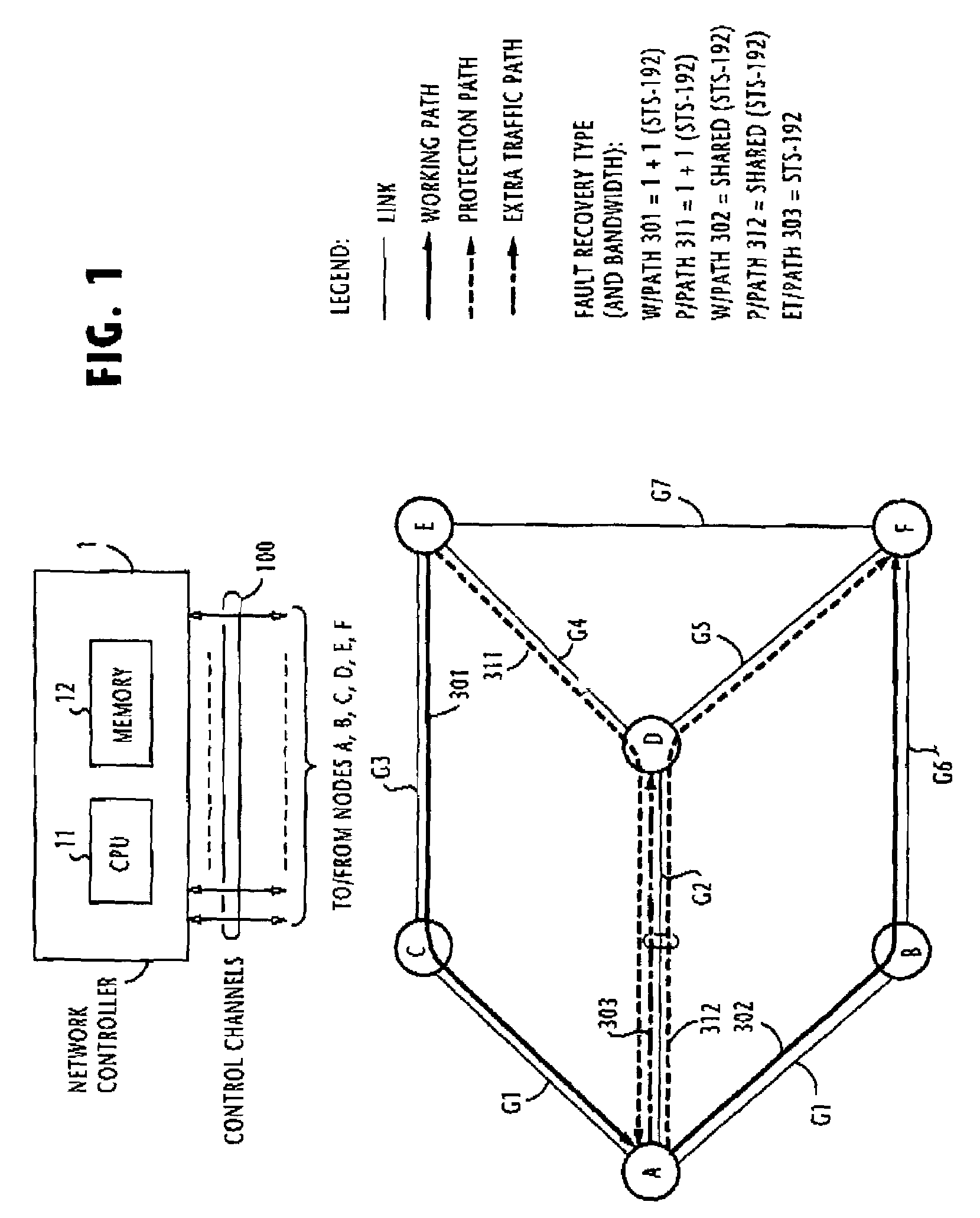Path establishment method for establishing paths of different fault recovery types in a communications network
a communication network and path establishment technology, applied in the field of fault recovery methods, can solve the problems of not providing signal to the protection resource, unable to accommodate a number of communication channels of different fault recovery types in a single communications network, and significantly low probability of fault occurrence in the protection resource, so as to avoid failure to recover
- Summary
- Abstract
- Description
- Claims
- Application Information
AI Technical Summary
Benefits of technology
Problems solved by technology
Method used
Image
Examples
first embodiment
[0051]Referring now to FIG. 1, an optical communication network of this invention comprises a network controller 1 and a plurality of nodes A to F interconnected by links in a meshed configuration. For example, nodes A and B are interconnected by a link AB in the direction from node A to node B and a link BA in the direction from node B to node A. In this embodiment, it is assumed that a path is established in a single direction from an initiating node to a terminating node. All links are indicated by SRLG (shared risk link group) identifiers G1 to G7. A bundle of links that are grouped under the same G1, for example, include links AB, BA, AC and CA. All nodes are connected via control channels 100 to the network controller 1, which includes a CPU 11 and a memory 12.
[0052]One typical example of a configuration of working paths and protection paths established in the network of FIG. 1. It is assumed that a working path 301 of recovery type “1+1” is established between nodes A and E v...
second embodiment
[0145]A communications network according to the present invention is shown in FIG. 16 and the detail of node A is shown in FIG. 17. This embodiment is useful for avoiding unsuccessful fault recovery due to fragmented time-slots. In this network, instead of wavelength paths, TDM paths are established as shown in FIG. 16 which is identical in configuration to that of FIG. 1. In the illustrated example, the working and protection TDM paths 301, 311 have a bandwidth of STS-1 and the working and protection TDM paths 302, 312 have a bandwidth of STS-3. The extra traffic path 303 has a bandwidth of STS-1 which occupies a portion of the STS-3 bandwidth the shared-type protection path 312.
[0146]In FIG. 17, the switch 20 of node A has input ports a0, b0, c0 for receiving TDM signals from neighbor nodes and output ports a1, b1, c1 for transmitting TDM signals to neighbor nodes. Input and output ports m0 and m1 are connected to a client terminal.
[0147]In FIG. 18A, a port table of the node A is ...
PUM
 Login to View More
Login to View More Abstract
Description
Claims
Application Information
 Login to View More
Login to View More - R&D
- Intellectual Property
- Life Sciences
- Materials
- Tech Scout
- Unparalleled Data Quality
- Higher Quality Content
- 60% Fewer Hallucinations
Browse by: Latest US Patents, China's latest patents, Technical Efficacy Thesaurus, Application Domain, Technology Topic, Popular Technical Reports.
© 2025 PatSnap. All rights reserved.Legal|Privacy policy|Modern Slavery Act Transparency Statement|Sitemap|About US| Contact US: help@patsnap.com



